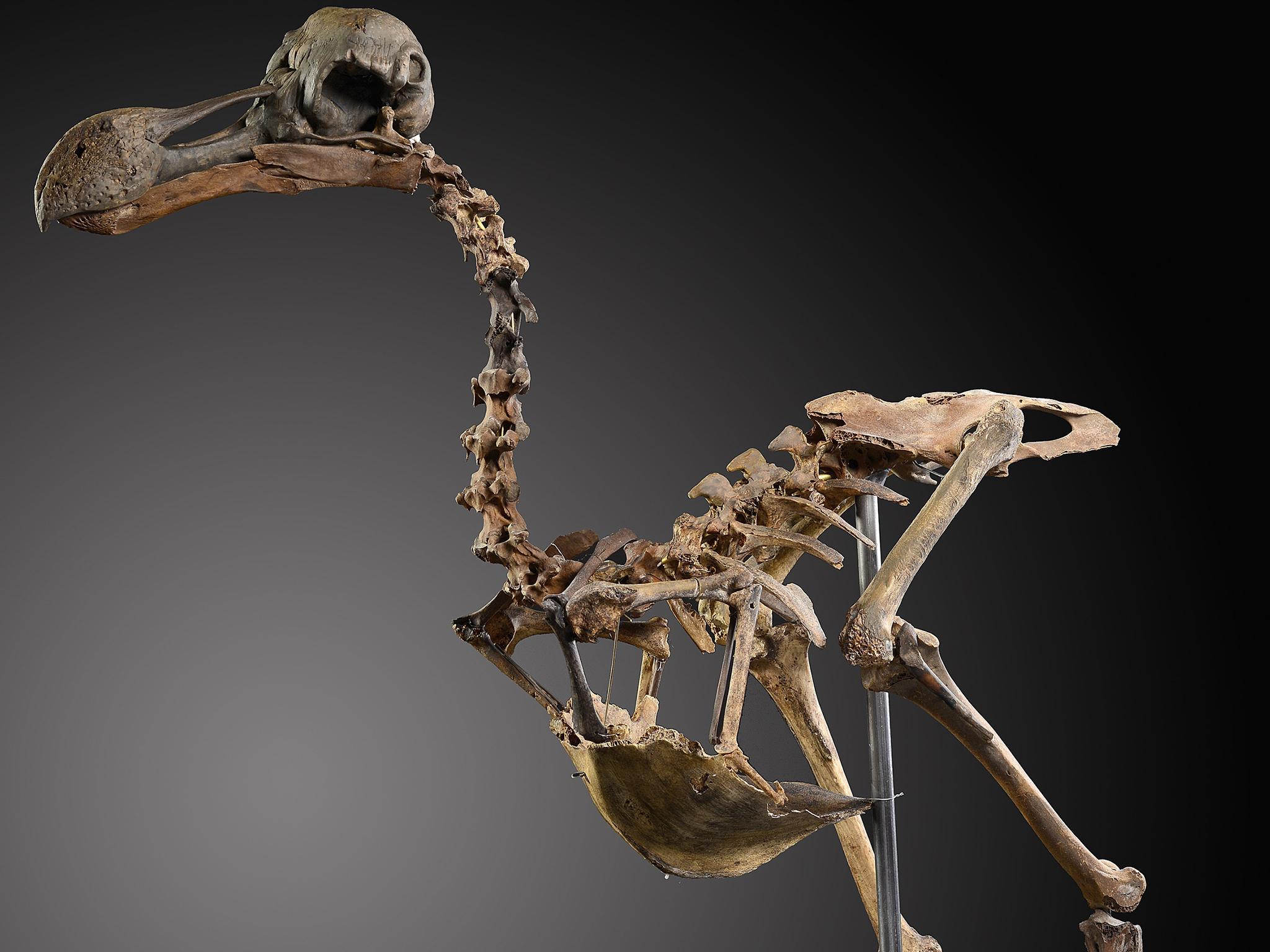First dodo skeleton to come up for sale in 100 years to be auctioned
Unique remains may fetch ‘high six-figure sum’, says auction house

Your support helps us to tell the story
From reproductive rights to climate change to Big Tech, The Independent is on the ground when the story is developing. Whether it's investigating the financials of Elon Musk's pro-Trump PAC or producing our latest documentary, 'The A Word', which shines a light on the American women fighting for reproductive rights, we know how important it is to parse out the facts from the messaging.
At such a critical moment in US history, we need reporters on the ground. Your donation allows us to keep sending journalists to speak to both sides of the story.
The Independent is trusted by Americans across the entire political spectrum. And unlike many other quality news outlets, we choose not to lock Americans out of our reporting and analysis with paywalls. We believe quality journalism should be available to everyone, paid for by those who can afford it.
Your support makes all the difference.The dodo has become a byword for extinction since it was wiped out in its only native habitat on the island of Mauritius in the 17th Century, just a few decades after it was first discovered.
Very few remains of the large squat birds are in existence and only one complete skeleton from a single individual is thought to survive.
However, the first dodo skeleton on the market in nearly 100 years will soon be available at auction.
Summers Place Auctions, a Sussex-based specialist in natural history auctions, has announced the sale of a 95 per cent complete composite skeleton of a dodo – thought to be the first such sale since 1914.
The skeleton comes from a private collector who bought the majority of the bones in the 1970s and 1980s.
By the early 2000s he realised he had enough bones to construct a skeleton, only lacking part of the skull and one set of claws, both of which have been reconstructed to complete the skeleton for the sale.
Rupert van der Werff, director of the auction house, said: “The rarity and completeness of this specimen cannot be over emphasised, and it provides a unique opportunity for an individual or an institution to own a specimen of this great icon of extinction.
“The majority of auction estimates are based on precedent of similar pieces being offered, which is impossible in this case, so given its rarity and desirability, we are anticipating an auction price in the region of a high six-figure sum.”
Dodos were first found by humans in September 1598, when a flotilla of ships belonging to the Dutch East India Company discovered a remote island in the Indian Ocean, which we now know as Mauritius.
According to writer and extinct creatures expert Errol Fuller, the sailors had little difficulty catching the flightless birds, which were the largest fowl on the island, and ate them.
Soon after, the Dutch, the English and French arrived on Mauritius, bringing with them a host of invasive species to the previously untouched island, including dogs, cats, rats and monkeys, all of which preyed on the bird and its eggs.
By 1680, the dodo had been wiped out.
After the bird’s demise, hardly any bones were in existence, though a series of paintings, and various written descriptions of the birds remained, along with two poorly stuffed examples that were subsequently lost.
But almost 200 years after the last dodo died, Mauritian school teacher George Clark came across a marshy area called the Mare aux Songes, close to what is now the site of the an airport.
Mr Clark believed the swamp could contain the preserved bones of extinct creatures.
So, in 1865, he hired labourers from a local sugar plantation to wade waist deep through the bog and feel for bones with their feet.
The result was the excavation of hundreds of dodo bones, as well as those of other extinct Mauritian creatures.
According to Summers Place auctions, almost all dodo skeletons held in museums around the world are composites made up of bones from different individuals and these composites come from the bones collected at the Mare aux Songes.

Only one skeleton survives where all of the bones are known to have come from the same individual. This unique specimen was collected in the early 1900s in a mountain valley and is on display in Port Louis, Mauritius.
Around the same time as the excavation of the bones from the Mare aux Songes, British author Lewis Carroll’s book Alice’s Adventures in Wonderland was published.
Featuring illustrations by John Tenniel of the book’s talking dodo, awareness of the bird and its sad demise propelled the dodo to a level of public consciousness that has remained with humans far longer than the creature was able to itself.
The last time an almost complete dodo skeleton was available was in 1914, when a skeleton was sold to Cardiff Museum, which paid £350 for the remains. Summers Place Auctions estimates that would be roughly £5m today.
The skeleton will be auctioned on 22 November and will be on public display beforehand at the auction house.
Subscribe to Independent Premium to bookmark this article
Want to bookmark your favourite articles and stories to read or reference later? Start your Independent Premium subscription today.
Join our commenting forum
Join thought-provoking conversations, follow other Independent readers and see their replies
Comments